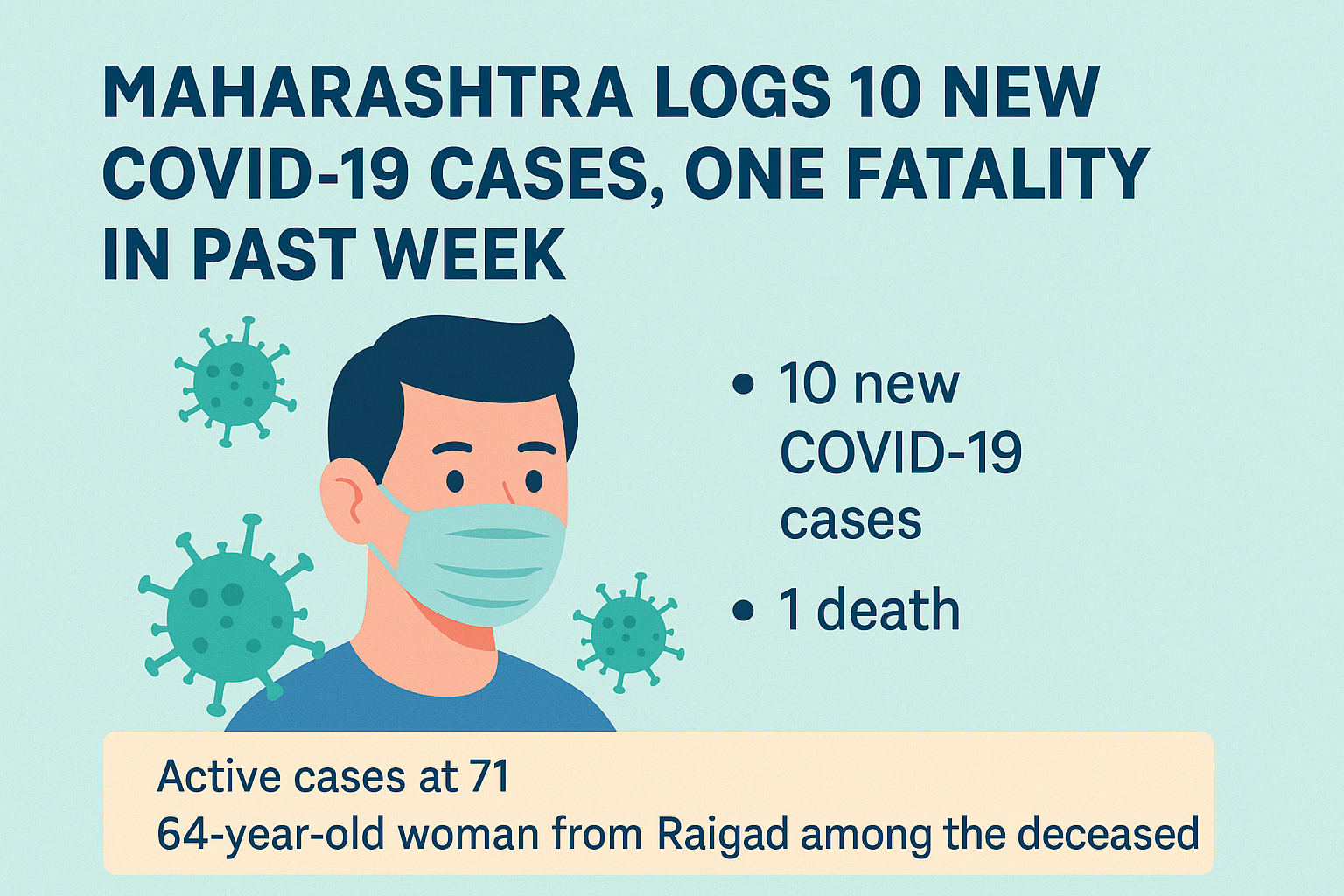
Maharashtra Logs 10 New COVID-19 Cases, One Fatality in Past Week
Mumbai: Maharashtra’s COVID-19 curve may be far flatter than in the pandemic’s peak years, but the virus still leaves its mark. The state’s Public Health Department reported 10 new COVID-19 cases and one death between August 12 and August 2025, underscoring the need for continued vigilance.
The fatality involved a 64-year-old woman from Raigad district with existing comorbidities. Her passing takes the state’s COVID-19 death toll for 2025 to 44. While daily case counts have dwindled to low double digits statewide, the episode is a reminder that for high-risk individuals, COVID-19 remains more than a footnote in public health.
Mumbai and Navi Mumbai Among the New Cases
Among the fresh cases, Mumbai and Navi Mumbai municipal corporation areas each reported one patient. The rest were scattered across other districts, reflecting how the virus still circulates in small but persistent clusters.
For Mumbai, these new cases raise the city’s 2025 total to 1,106. Interestingly, **653 of these were reported in just two months—June and July—**suggesting that even low case environments can see seasonal or situational spikes. In August so far, Mumbai has recorded 12 cases.
Maharashtra’s Year-to-Date COVID-19 Picture
Since January, Maharashtra has logged 2,755 COVID-19 cases, of which 2,684 patients have recovered. This means the state has seen a recovery rate above 97%, but also that the virus has not entirely exited the stage.
Testing remains an essential diagnostic tool. The state has conducted 45,057 COVID-19 tests since the start of 2025, covering both symptomatic and high-risk groups. These numbers may seem modest compared to the testing surges of previous years, but in today’s lower-case environment, they represent targeted, surveillance-driven testing.
Health Officials Tighten Surveillance Net
During a recent state-level COVID-19 review meeting, health authorities reiterated a key principle of epidemic management: constant watchfulness. The directives issued were clear:
- Continue regular surveillance of Influenza-Like Illness (ILI) and Severe Acute Respiratory Infection (SARI) cases.
- Ensure 5% of ILI patients and all SARI patients are tested for COVID-19.
- Send all positive samples for Whole Genome Sequencing (WGS) to monitor mutations and variants.
This focus on early detection and genomic tracking is the state’s hedge against surprises. It reflects lessons learned during earlier waves, when variant-driven spikes caught systems off guard.
Hospitals Asked to Maintain Full Readiness
The health department has instructed public health institutions, government medical colleges, and municipal hospitals to maintain full COVID-19 readiness—testing labs functioning, isolation wards operational, and treatment protocols updated.
It is a cautious but necessary measure. In the world of infectious diseases, complacency can be expensive. Preparedness means that if a flare-up occurs—whether through a new variant or a local outbreak—response time is minimal.
Citizens’ Role in Containment
The official advice to citizens may sound familiar but remains relevant:
- Wear masks in crowded or enclosed spaces, especially if elderly or immunocompromised.
- Maintain hand hygiene.
- Seek medical attention early if experiencing flu-like symptoms.
The health department’s appeal to the public was straightforward: stay vigilant, because the virus has not fully gone away. In the language of public health economics, prevention remains cheaper than treatment.
Why This Matters Beyond Case Counts
In a tone often echoed by economic commentator Manish Sabharwal, the numbers here tell more than one story. While 10 cases in a week might seem statistically insignificant in a state of 125 million people, they represent the tail risk of an event with potentially high social and economic cost if mismanaged.
Public health, like macroeconomics, thrives on confidence and capacity. The former ensures people continue daily life without fear; the latter ensures systems can absorb shocks when they appear. Maharashtra’s focus on surveillance, testing, and preparedness is essentially an investment in resilience.
Looking Ahead
COVID-19 in 2025 may not command front-page urgency, but it remains a thread in the state’s public health tapestry. The challenge now is to integrate pandemic readiness into routine healthcare without exhausting resources.
Maharashtra’s weekly updates serve as a quiet checkpoint—a way to measure whether the virus is retreating into obscurity or preparing for another move. For now, the numbers are low, the systems are primed, and the message is steady: watch, prepare, and protect.





